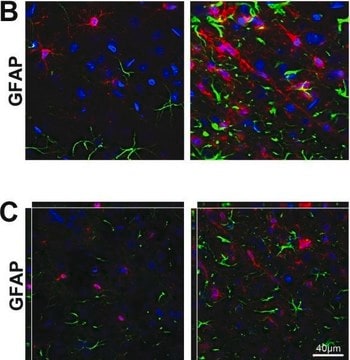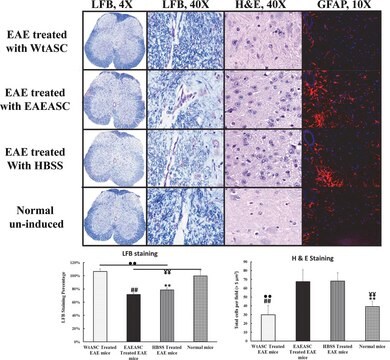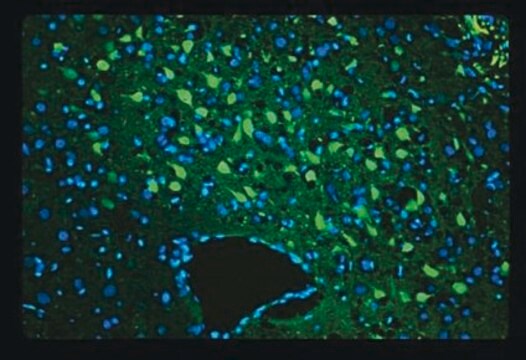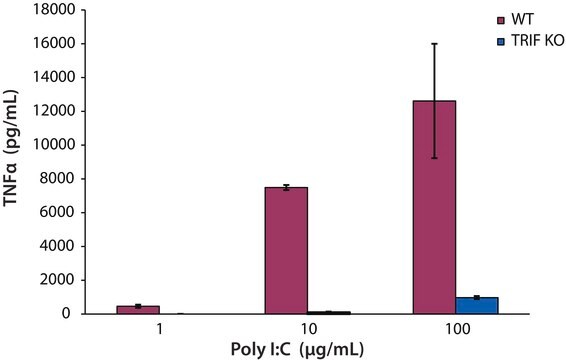MAB3402
Anti-Glial Fibrillary Acidic Protein Antibody, clone GA5
clone GA5, Chemicon®, from mouse
Synonym(s):
GFAP
About This Item
Recommended Products
biological source
mouse
Quality Level
antibody form
purified immunoglobulin
antibody product type
primary antibodies
clone
GA5, monoclonal
species reactivity
chicken, pig, rat, bovine, mouse, rabbit, human
manufacturer/tradename
Chemicon®
technique(s)
immunocytochemistry: suitable
immunohistochemistry (formalin-fixed, paraffin-embedded sections): suitable
western blot: suitable
isotype
IgG1
NCBI accession no.
UniProt accession no.
shipped in
wet ice
target post-translational modification
unmodified
Gene Information
human ... GFAP(2670)
General description
Specificity
Immunogen
Application
5 μg/mL of a previous lot was used.
Immunohistochemistry:
5 µg/mL
Immunoblotting:
Recognizes a 51kDa protein in reducing westerns of total brain lysates.
Optimal working dilutions must be determined by end user.
Neuroscience
Neuronal & Glial Markers
Quality
Western Blot Analysis:
1:1000 dilution of this lot detected Glial Fibrillary Acidic Protein on 10 μg of Mouse Brain lysate.
Target description
Linkage
Physical form
Storage and Stability
DO NOT FREEZE.
Analysis Note
Mouse brain tissue, Astrocyte culture.
Legal Information
Disclaimer
Not finding the right product?
Try our Product Selector Tool.
recommended
Storage Class Code
10 - Combustible liquids
WGK
WGK 2
Regulatory Listings
Regulatory Listings are mainly provided for chemical products. Only limited information can be provided here for non-chemical products. No entry means none of the components are listed. It is the user’s obligation to ensure the safe and legal use of the product.
JAN Code
MAB3402:
Certificates of Analysis (COA)
Search for Certificates of Analysis (COA) by entering the products Lot/Batch Number. Lot and Batch Numbers can be found on a product’s label following the words ‘Lot’ or ‘Batch’.
Already Own This Product?
Find documentation for the products that you have recently purchased in the Document Library.
Customers Also Viewed
Articles
Human iPSC neural differentiation media and protocols used to generate neural stem cells, neurons and glial cell types.
Derivation and characterization of functional human neural stem cell derived oligodendrocyte progenitor cells (OPCs) that efficiently myelinate primary neurons in culture.
Our team of scientists has experience in all areas of research including Life Science, Material Science, Chemical Synthesis, Chromatography, Analytical and many others.
Contact Technical Service









